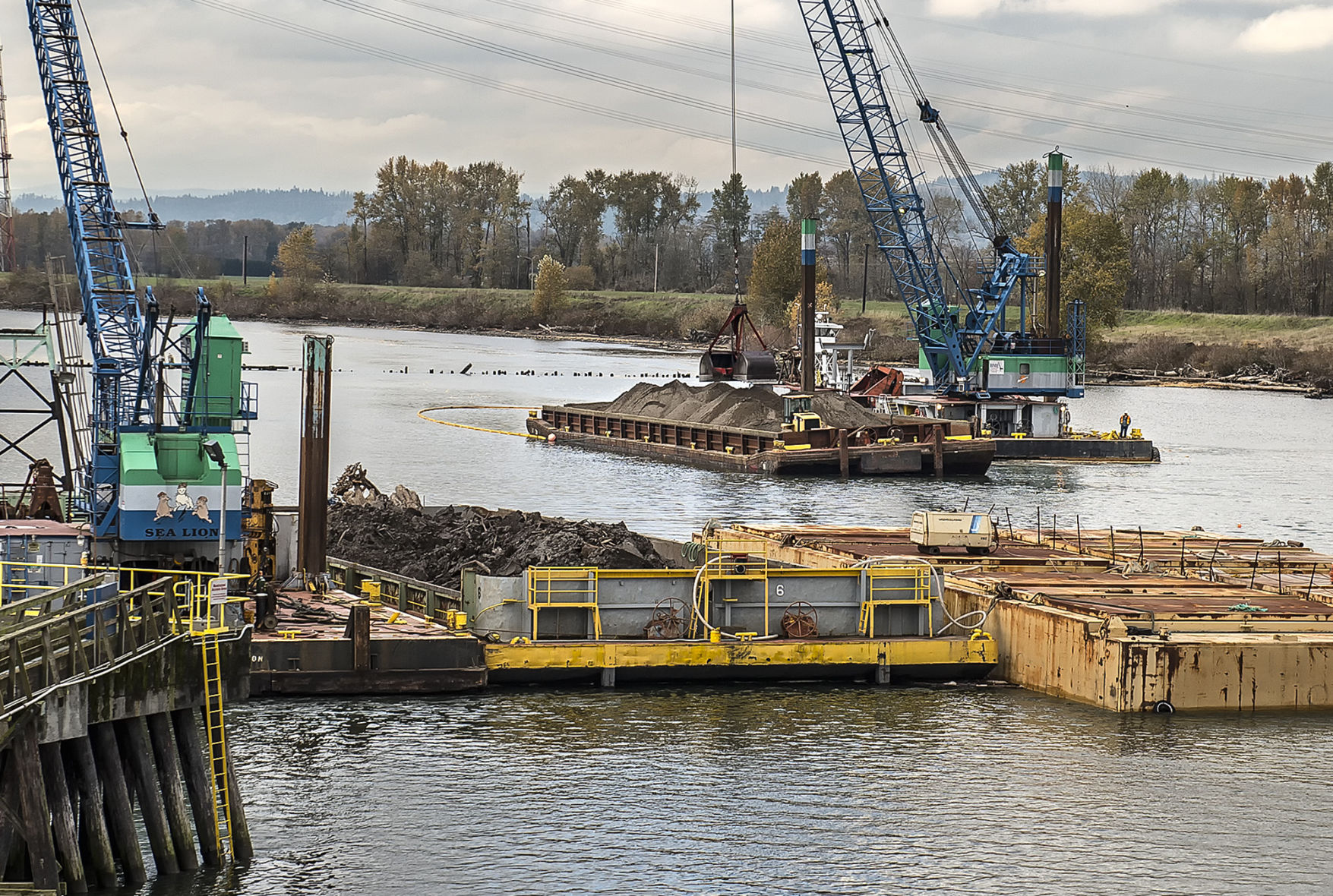LONGVIEW — After years of studying the $680 million Millennium coal project, Cowlitz County is recommending approval of two shoreline permits as long as the company can meets 36 conditions meant to ease its environmental and social impacts.
County planning staff submitted a 79-page staff report to a hearings examiner Thursday. The report outlines why the project should be approved under condition that Millennium controls coal dust, compensates for wetland losses and reduces locomotives and vessels emissions, among other requirements.
A few hundred people in red and blue shirts descended on the Cowlitz County Expo Center Thursday for the start of a four-day public hearing on the shoreline permits. Pro-Millennium and anti-coal groups hosted competing lunchtime rallies with speeches from government officials, activists and community members.
The countyapproved a critical areas permit for the terminal in July, but the shoreline permits are considered a more significant hurdle.
In the quasi-judicial hearing, Millennium presented oral arguments defending its project to hearing examiner Mark Scheibmeir. Counter arguments from Columbia Riverkeeper as an intervening party of record followed. Public testimony and cross examination is expected to continue today, Monday and Tuesday.
Once the hearing ends next Tuesday, Scheibmeir has 10 business days to decide whether to grant Millennium a conditional use permit and substantial shoreline development permit for the project, which would be built on the old Reynolds Metals site west of Longview.
Scheibmeir will only consider whether to grant the permits for stage one of the project – which will includes one dock with a ship loader, one additional dock for holding waiting vessels, a rail yard for unit trains and infrastructure to load coal from trains to ships. In stage one, Millennium would export 25 million tons of coal. The company must reapply for shoreline permits before ramping up to 44 million tons of coal after three to five years in stage two.
Even if Scheibmeir grants the shoreline permits, Millennium has many hoops to jump through. It must win its appeal of the state Department of Ecology’s denial of a key water quality permit. It must also obtain a total of 23 permits from local, state and federal agencies.
A Cowlitz County judge handed Millennium a win last week, finding that the state was arbitrary and capricious when it denied a sublease needed for a coal dock. Yet Millennium will still have to bargain a compromise before it can actually get the sublease.
“Cowlitz County should not be wasting its time and money on the shoreline permit review now when so much else about this project is uncertain,” said Kristin Boyles, attorney with Earthjustice, arguing on behalf of Columbia Riverkeeper.
“Ecology and DNR are agencies with longstanding expertise that the county should not ignore. Their denials or disapprovals were not random, but based on a review of the same environmental documents that you have in front of you,” Boyles told the hearing examiner.
However, the county previously said that legally it must continue with the permitting process. County staff recommendation of the shoreline permit approval hinges on whether Millennium can implement a plan to compensate for the project’s shoreline impacts.
Millennium’s terminal would remove about 32 acres of wetlands from the shoreline, according to the county staff report. To compensate, Millennium proposes creating about 60 acres of new wetlands north of the project site, rehabilitating about 14 acres of wetland and re-vegetating about 14 acres of upland buffer, according to the county.
The mitigation plan also calls for Millennium to develop a man-made slough by connecting a pond off of Dike Road to the Columbia River, creating a new fish habitat.
“The shoreline would be improved with the creation of the off-channel slough habitat that would substantially change the habitat activity for important Endangered Species-listed fish on this portion of the river,” Glenn Grette, an environmental consultant for Millennium, told the hearing examiner.
The county also wants Millennium to work with county and federal officials to implement a quiet zone along the industrial area rail corridor. If a quiet zone isn’t implemented, the county would require Millennium to fund a study on reducing train noise.
To prevent coal dust emissions, the county would only allow Millennium to receive coal shipments sprayed with a protective sealant in Pasco, Wash. Millennium would also have to work with the Southwest Clean Air Agency to monitor coal dust emissions and take measures to stop emissions if they exceed nuisance levels.(The state’s review found that coal dust emissions would not exceed air quality standards for human health.)
At the hearing, Scheibmeir questioned a BNSF Railway spokesperson about how the company would clean up any coal dust that scatters around tracks. Dava Kaitala, BNSF construction and permitting director, replied that coal dust isn’t a major problem because of the way trains are loaded in a “bread loaf” shape and sprayed with sealants to encase the coal.
“Our research and experience has shown coal dust to be in issue near mine loading points in the Powder River Basin located in Wyoming and Montana, but not in Washington,” Kaitala said. “Despite arguments to the contrary, coal dust has never been an issue in Washington – 1,000 miles away from the Powder River Basin. And thanks to our efforts, it isn’t an issue in the Powder River Basin anymore either.”
In testimony, opponents poked holes in the county’s proposed mitigation plan and suggested that staff overlooked the project’s significant impacts identified in the final environmental impact statement for the project, released in April. The review found that terminal would trigger significant, unavoidable impacts in nine areas:vehicle traffic, vessel traffic, rail capacity, rail safety, noise pollution, social and community resources, cultural resources and tribal resources.
“The most interesting part about today’s testimony has been the disconnect between the thousands of pages of review and analysis in the final environmental impact statement and the presentations,” Boyles said. “The FEIS acknowledges that reasonable measures cannot mitigate these impacts no matter what is presented in the county report.”



